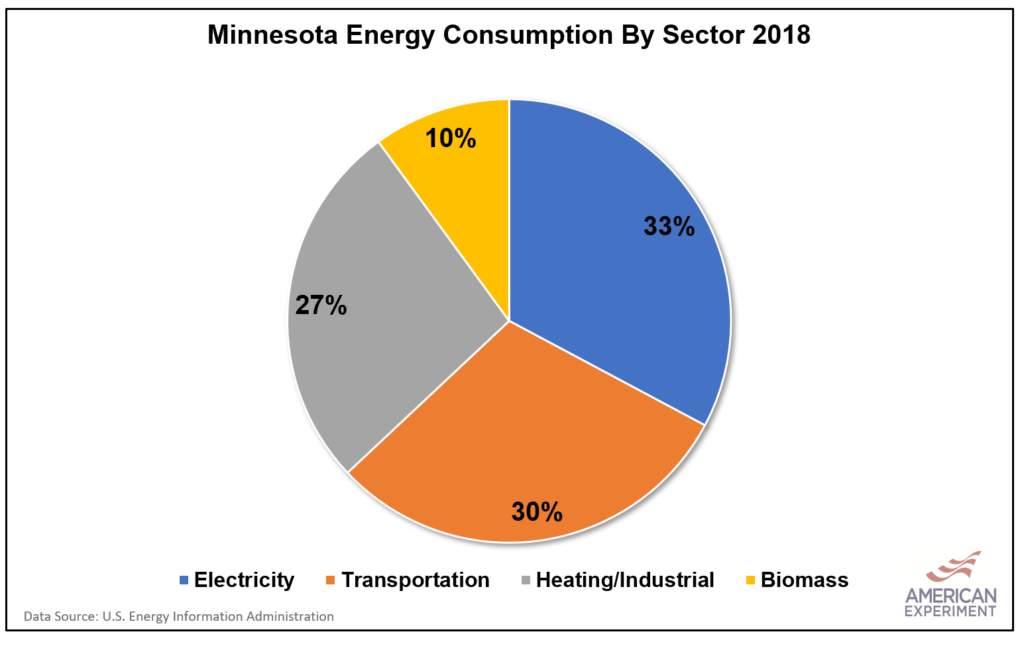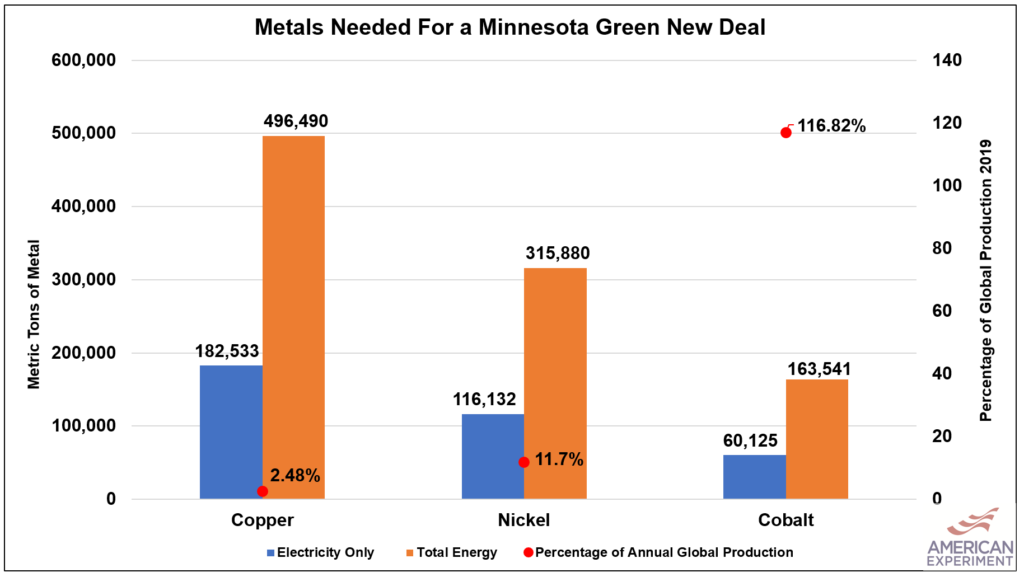How Much Metal Would A Minnesota Green New Deal Require? Part Two
Last week I wrote about how converting Minnesota’s electrical grid to a combination of nearly 100 percent wind, solar, and battery storage would consume enormous quantities of copper, nickel, cobalt, iron, and steel.
While that analysis determined that huge amounts of these metals would be needed for “green” electricity, it is important to remember that electricity is only part of the energy equation, and if we wanted to completely get rid of fossil fuel from our energy economy, it would require much more metal.
The pie chart below was created using data from the U.S. Energy Information Administration. As you can see, oil and natural gas are the largest components of our energy use, accounting for 33 percent and 28 percent of our total energy consumption in 2018, respectively. Coal accounted for 14 percent of our total energy consumption, biomass (including ethanol, bio-diesel, and biomass used to generate electricity) accounted for 10 percent, nuclear provided 8 percent, small hydroelectric dams 1 percent, wind generated 5 percent, and solar, 1 percent.

Oil is primarily used for transportation, but it is also used for home heating as well as commercial and industrial uses. Natural gas is primarily used for heating homes, businesses, and industrial facilities, and about 13 percent of the natural gas used in Minnesota is used to generate electricity. Coal is almost exclusively used to generate electricity, as are nuclear, hydroelectric, wind, and solar.
If we assume biomass is carbon neutral and won’t need to be replaced with wind, solar, and batteries, we can approximate that 30 percent of our total energy consumption is used for transportation, 33 percent is used in the form of electricity, 27 percent comes from heating and industrial uses, and 10 percent comes from biomass, as you can see in the pie chart below.

This means 57 percent of the energy we consume on an annual basis would still need to be converted to wind-, solar-, and battery-powered electricity to truly comply with the Green New Deal. This would require much more metal.
The chart below shows the amount of copper, nickel, and cobalt needed to replace all of the energy consumed in Minnesota (except biomass) with wind turbines, solar panels, and battery storage in orange. It also shows the amount of metal needed to generate nearly 100 percent of Minnesota’s electricity from these sources in blue. Lastly, the red dots show what percentage of global copper, nickel, and cobalt production it would require to get 100 percent of Minnesota’s energy needs from wind, solar, and storage, based on 2019 production data from the United States Geological Survey.
A Minnesota Green New Deal would require nearly 2.48 percent of global copper output, 11.7 percent of nickel output, and 116 percent of global cobalt production.

Replacing all of our energy with wind, solar, and storage would also require 2.7 million metric tons of steel, and 9.4 million metric tons of steel.
It’s important to remember that these estimates are still conservative because they do not take the massive amounts of metal needed for transmission lines, substations, and collection lines into account. These estimates also do not factor in the additional metal that would be needed to build the electric cars used for transportation, which would significantly increase the amount of copper, nickel, and cobalt required.
Conclusion
A Minnesota Green New Deal would require an unfathomable amount of metal. Wind turbines and solar panels require much more metal than other technologies because they are unreliable, which means they require battery storage and also need to be “overbuilt” to ensure there is enough electricity when it is cloudy or on calm days with slow wind speeds. The quantity of metal needed gets even bigger when one remembers that wind turbines only last 20 years and solar panels last for 25 years.
The sheer quantity of metal needed for this type of economy indicates that the Green New Deal is nothing more than an unserious fairy tale dreamed up by people who are entirely clueless on energy and environmental issues. Sadly, the most ardent Green New Deal supporters are usually the ones who are most opposed to mining in Minnesota, highlighting how energy illiterate the people who claim to believe in “the science” truly are.